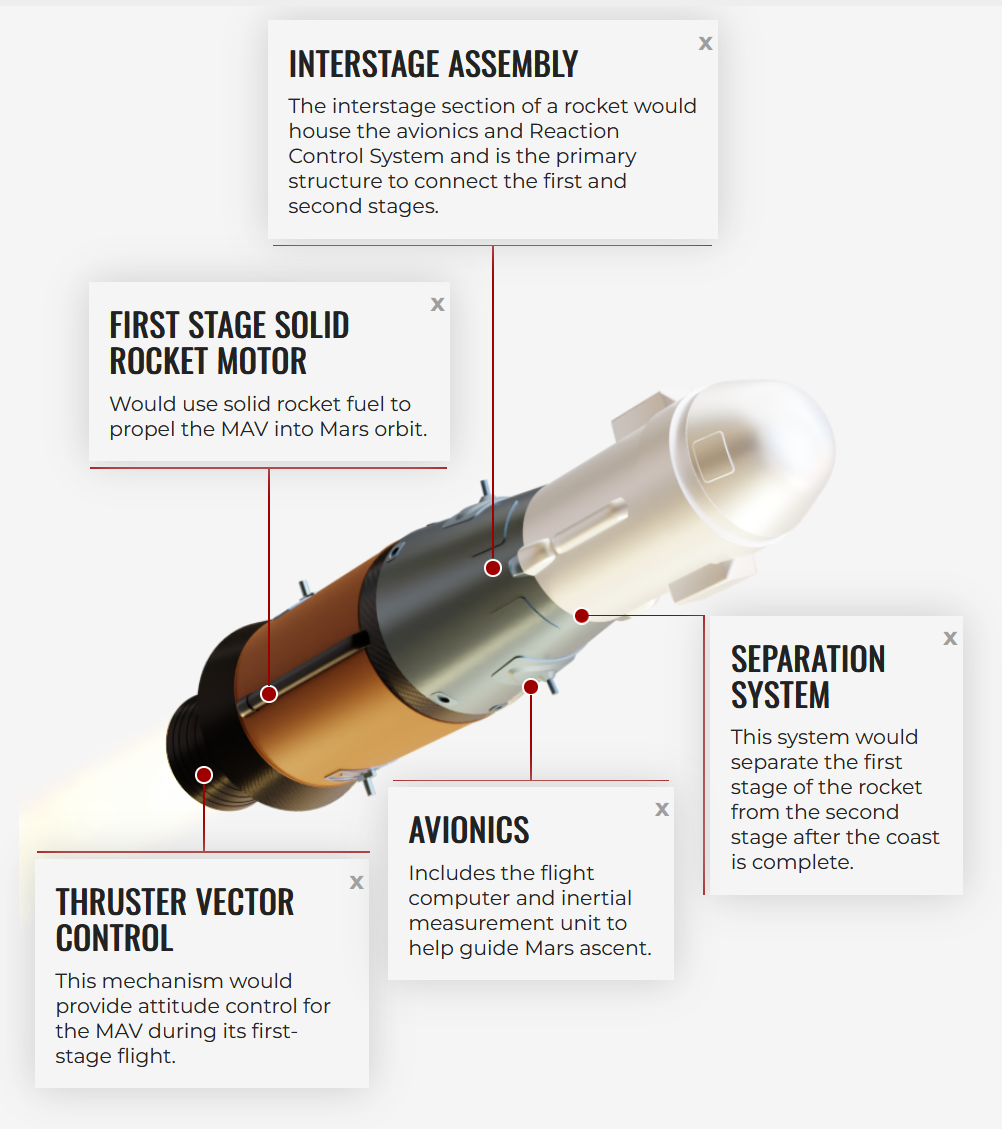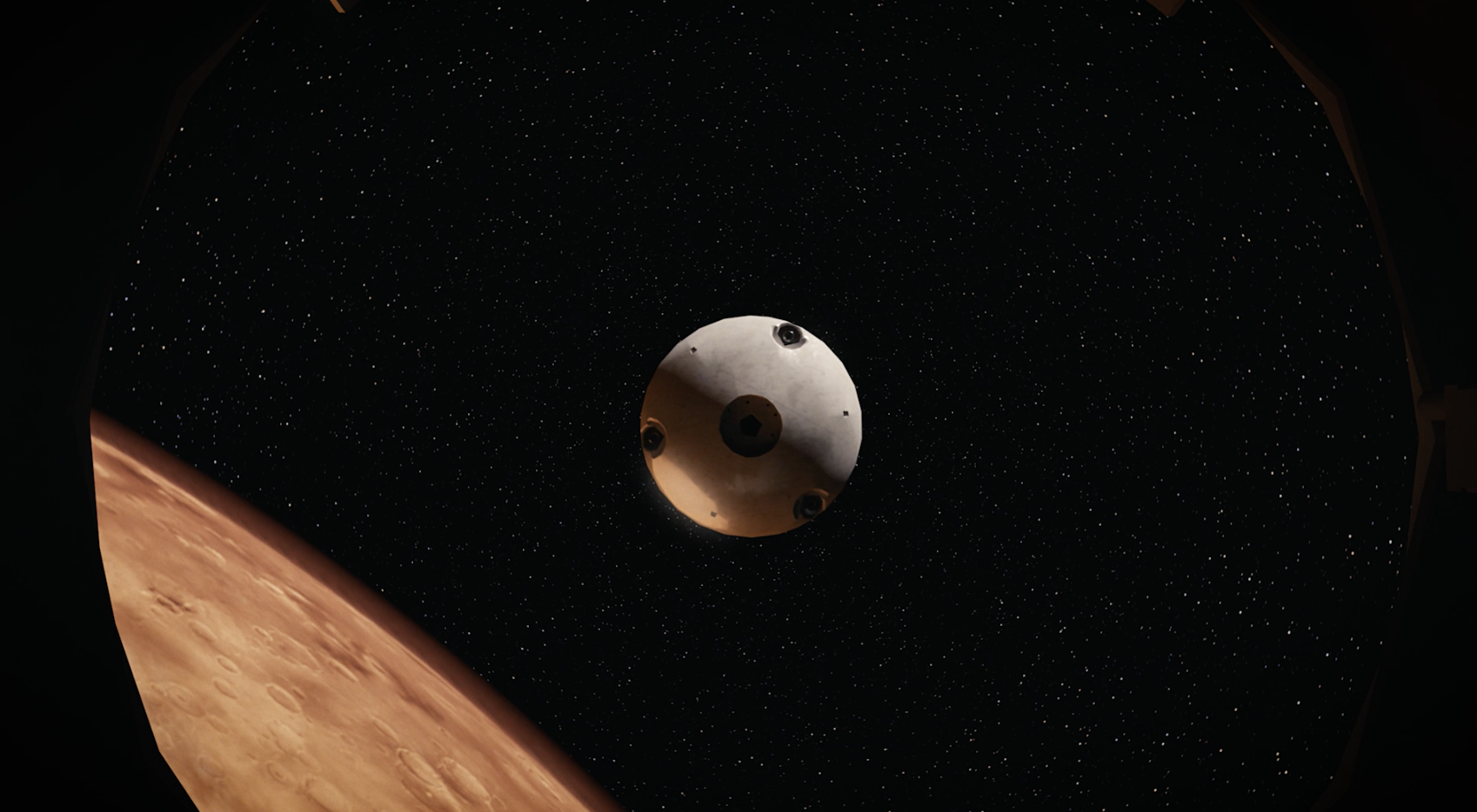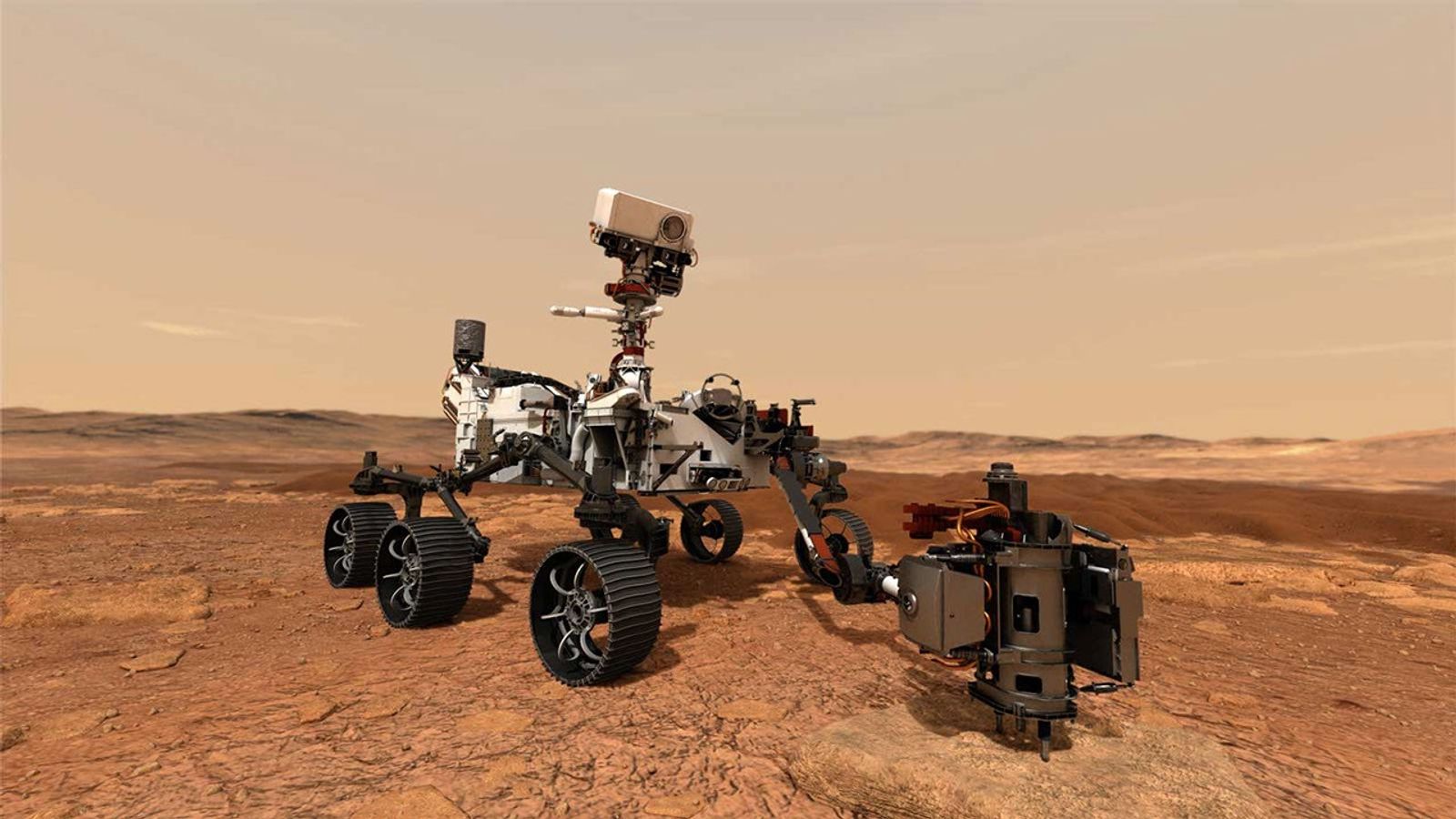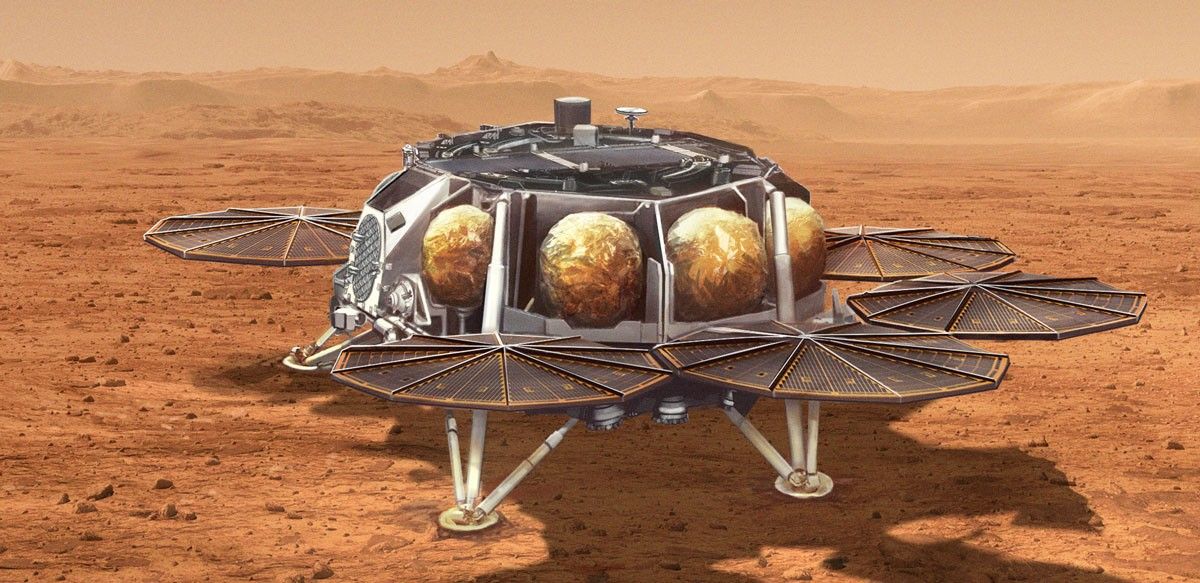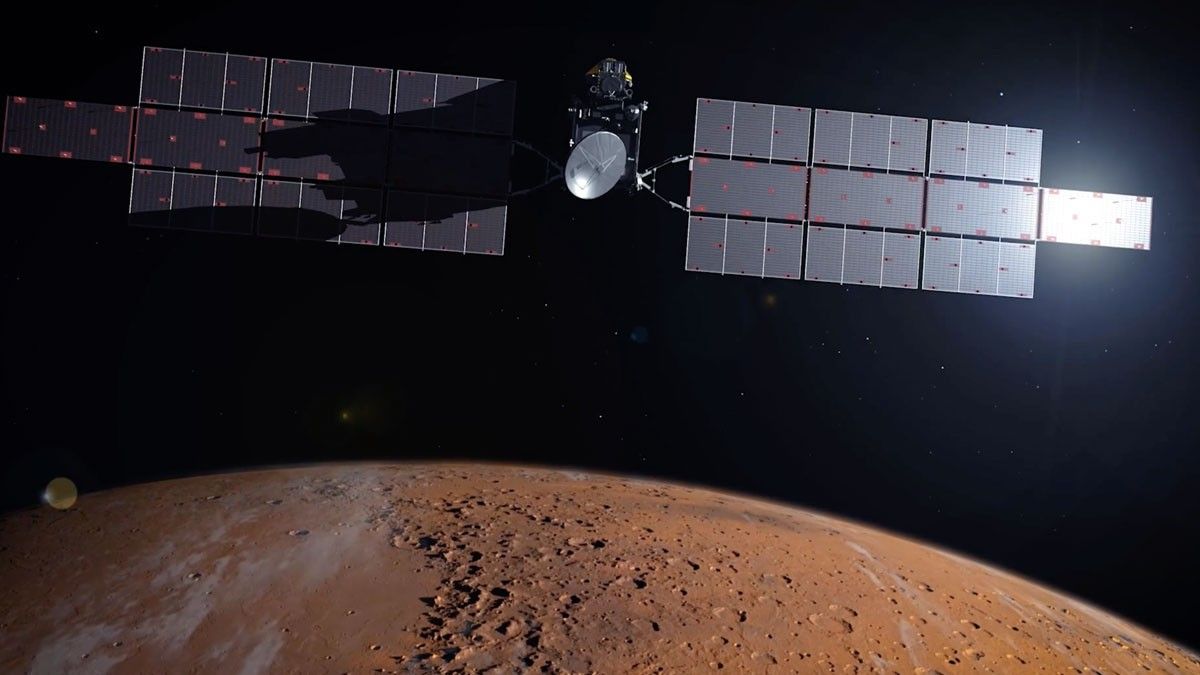Mars Sample Return
Mars Ascent Vehicle
The Mars Ascent Vehicle will carry tubes containing Martian rock and soil samples into orbit around Mars, where ESA's Earth Return Orbiter spacecraft will enclose them in a highly secure containment capsule and deliver them to Earth.
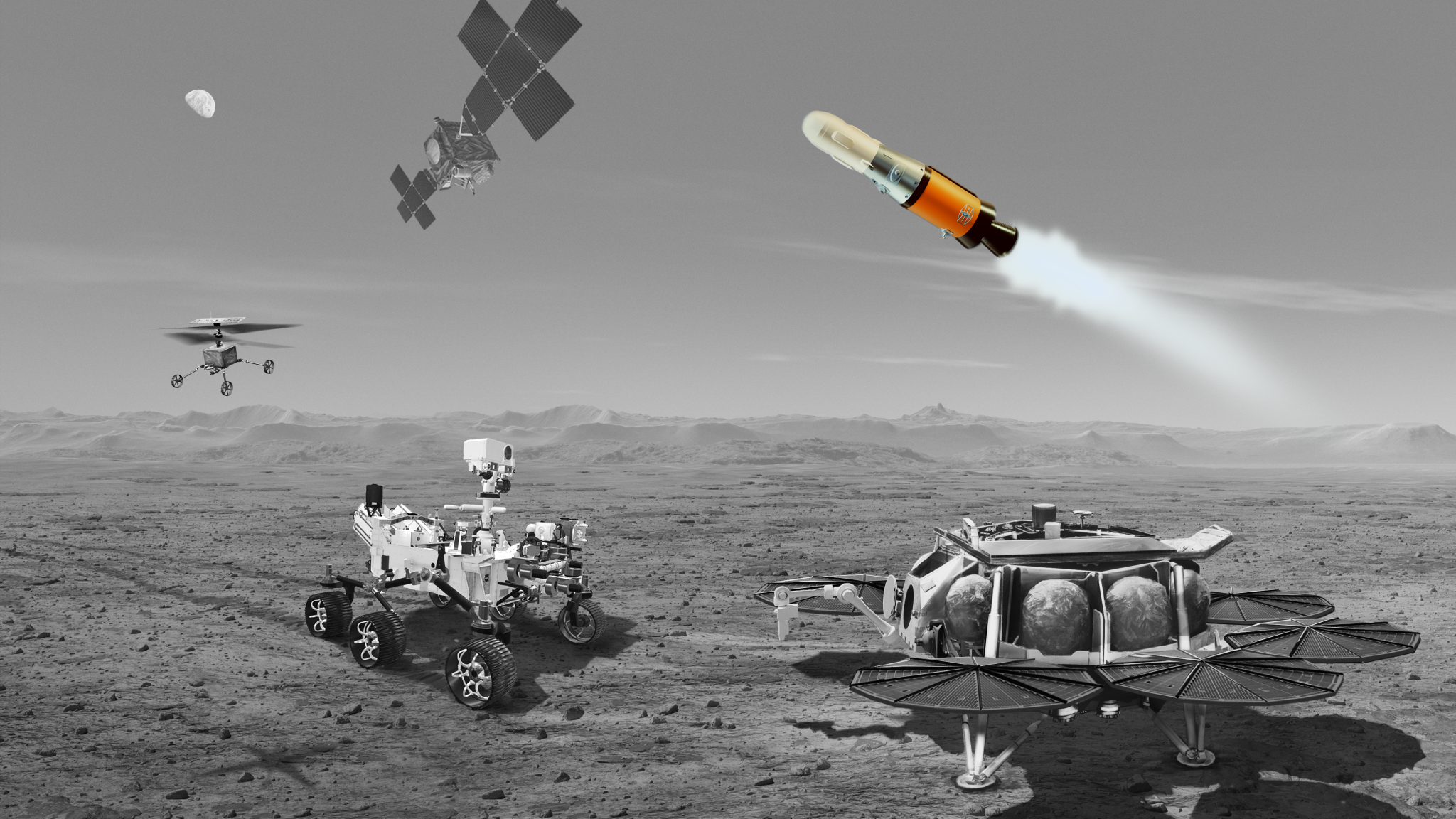
The Mars Ascent Vehicle is a lightweight rocket that would transport the Orbiting Sample, into Mars orbit as part of NASA and European Space Agency's (ESA) Mars Sample Return Program. It would be the first rocket ever to launch off the surface of another planet, and would transport the sample tubes containing Martian rock, atmosphere, and loose surface material into orbit around Mars. The rocket and enclosed sample container would travel to Mars inside the Sample Retrieval Lander, and would remain aboard until loaded with samples and prepped for launch. Once the sample container reaches Mars orbit orbit, ESA's Earth Return Orbiter would capture and store it in a secure containment capsule for safe delivery to Earth.
Anatomy of the Mars Ascent Vehicle
Tech Specs
| Height | 10 feet (3 meters) tall |
| Mass | Approximately 992 pounds (450 kilograms) |
| Weight | Approximately 992 pounds (approximately 450 kilograms) on Earth Approximately 372 pounds (approximately 69 kilograms) on Mars |
| Diameter | 1.6 feet (0.5 meters) wide |
| Speed | 2.5 miles per second (about 4 kilometers per second), the MAV would reach its desired orbit about 10 minutes after launch |
| Fuel | Two-stage, solid propellant rocket |
Orbiting Sample Container
The Orbiting Sample container would hold up to 30 tubes filled with Martian rock and atmospheric samples from the Perseverance rover. NASA's Mars Perseverance rover has been collecting Martian rock and atmospheric samples since landing on Mars in February 2021. The rover has been caching the samples for potential pickup by the Mars Sample Return Campaign. Held safely inside of the rover, the samples would be transferred to the Orbiting Sample aboard the Mars Ascent Vehicle as the next step on its journey to Earth.
Tech Specs
| Size | Approximately 9.5 inches high by approximately 8.9 inches wide (approximately 0.24 meters high by approximately 0.23 meters wide) |
| Weight/Mass | Approximately 24 pounds (approximately 11 kilograms) |
| Number of Tubes | Would carry up to 30 sample tubes |

























